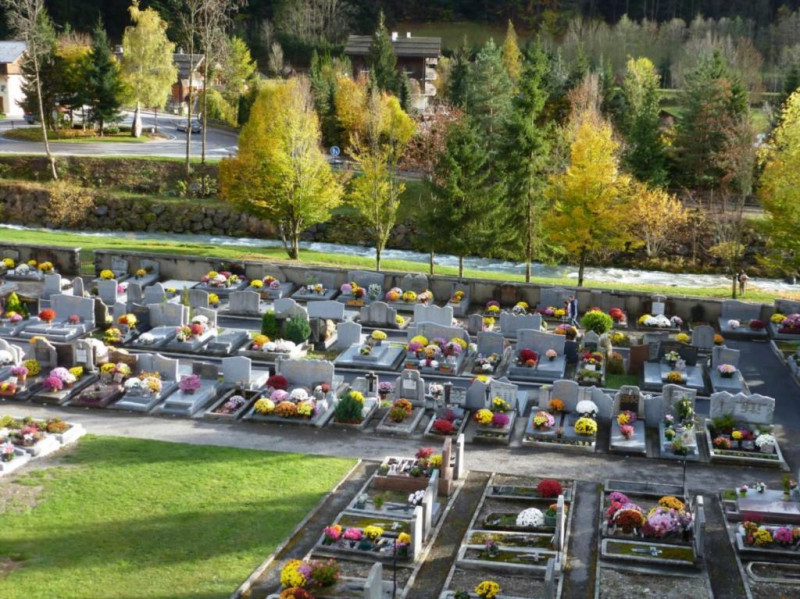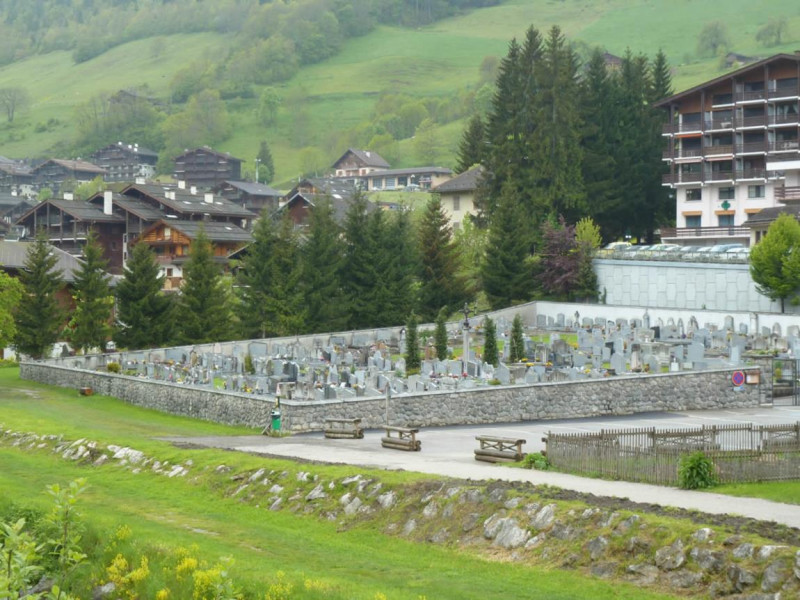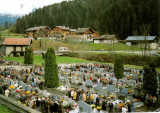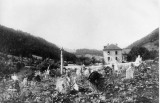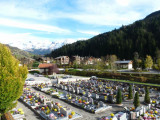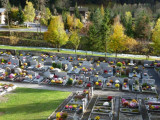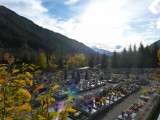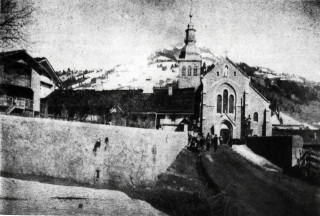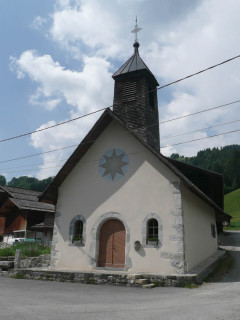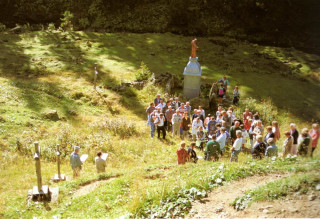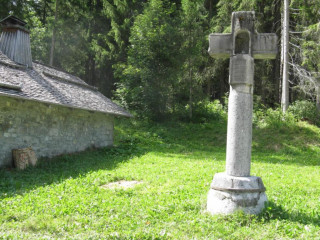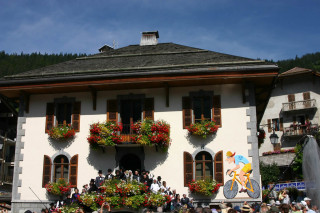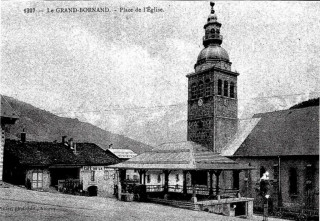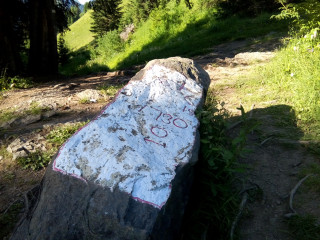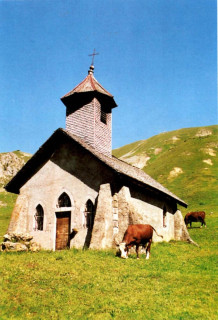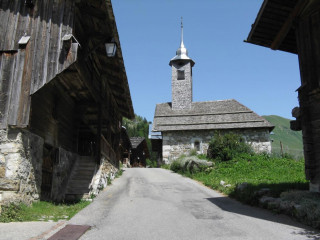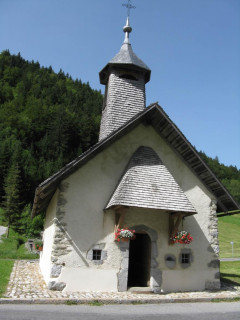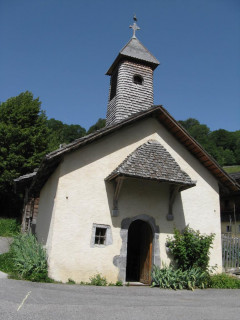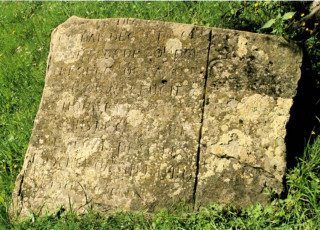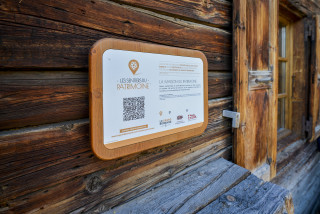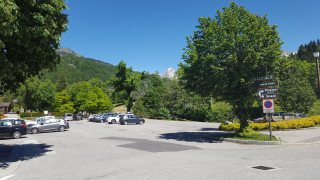Cemetery
Contact
Le Grand-Bornand Village
74450
Le Grand-Bornand
Phone : +33 4 50 02 79 18
The original cemetery was situated for a long time immediately around the church. In the mid-XX century, it had to be relocated so that a new village square could be built in front of the Tourist Office, the Town Hall and the church.
Until the mid-XIX century, the cemetery was located just below the church, on the Aravis mountain side. In 1816/17, following very heavy snowfall, the church had to be rebuilt. During work on the new foundations, bodies were discovered all around the church.
In 1850, the Prefect ordered that the cemetry be moved. To pay for the work, former residents of Le Grand Bornand who had left the village donated 2400 pounds and a further 660 pounds was raised by the villagers themselves. The new cemetery was relocated to a field just opposite of the main door of the church and it was inaugurated in 1854. The original site became free for the building of the first village hall.
By the end of the 1950's, winter tourism was developping fast in Le Grand Bornand. There was pressure to design a more functional village square to serve the needs of the Town Hall and the Tourist Office. Building the new square also enabled the development of shops and restaurants. At the same time, the 1921/1923 war memorial, which used to be beside the main road, was relocated to be beside the new cemetery site.
This is how the cemetry came to be moved once again, between 1957 and 1963, to its present site beside the Borne river and on the road below the Tourist Office.
In 1850, the Prefect ordered that the cemetry be moved. To pay for the work, former residents of Le Grand Bornand who had left the village donated 2400 pounds and a further 660 pounds was raised by the villagers themselves. The new cemetery was relocated to a field just opposite of the main door of the church and it was inaugurated in 1854. The original site became free for the building of the first village hall.
By the end of the 1950's, winter tourism was developping fast in Le Grand Bornand. There was pressure to design a more functional village square to serve the needs of the Town Hall and the Tourist Office. Building the new square also enabled the development of shops and restaurants. At the same time, the 1921/1923 war memorial, which used to be beside the main road, was relocated to be beside the new cemetery site.
This is how the cemetry came to be moved once again, between 1957 and 1963, to its present site beside the Borne river and on the road below the Tourist Office.
All year round
Description
- Historical heritage :
- Historic patrimony
- Civil cemetery
Facilities and services
- Parking :
- Parking
- SITRA services :
- Services
- Services
- Services
- Services
- Services
- Services
To note
- Type of SITRA offer :
- Not recommended in bad weather
- Open air
- Accessibility criteria for people with reduced mobility :
- Accessible for wheelchairs with assistance
Localisation
FICHE_INFO_SIMPLE_LIBELLE_DESTINATION
Cimetière
Le Grand-Bornand Village
74450
Le Grand-Bornand
GPS coordinates
Latitude : 45.941291
Longitude : 6.427898
Tarifs
Free
View also
After 60 years of building work, undertaken and financed by the local community,it was consecrated in 1877. Built in the neo-gothic style of the XIX century, the architecture is typical of the golden age of the Catholic church.
The chapel of Le Bouchet, in the heart of the Bouchet valley, was founded in 1704 after a flood. It boasts a beautiful altarpiece, dating back to the XVIII century.
The Stations of the Cross pilgrimage at La Duche originated in 1888, linking the chapel of La Duche with St Bruno's oratory, the site of a miraculous spring.
The cross at Le Clos du Pin is unusual for two reasons : firstly, this stone cross is the oldest of all the Le Grand Bornand crosses (dating from 1500) and secondly, and for the same reason, it has been classified since 1944 as a heritage monument.
The Town Hall is a stone building, typical of early XX century architecture. It houses all the municipal services and the meeting room for the village council.
The weekly market at the Grenette, the old grain market of Le Grand Bornand, characterizes the heart of the old town square. All sorts of concerts and events also take place here, such as concerts given by the local brass band and many local celebrations.
The inscribed border stone, at the foot of the dale of Tardevant, marks the limit between the villages of Le Grand Bornand and La Clusaz. This stone is about 1m. long and is dated 1755.
The chapel of la Duche is the oldest of Grand Bornand. Based in the end of the XVIIth century,it is reconstructed at the end of the XIXth century. Itis dedicated in particular to several agrarian saints: saint Anne, saint Grat and saint Guérin.
Founded in 1677, the chapel is nestled in the heart of the old village of Le Chinaillon. Despite major renovation work to the building in 1977, it has retained its traditional appearance.
Located in the heart of the hamlet of Les Plans, the chapel of the same name was founded in 1702 after the flooding of the Borne river. From the chapel there is a wonderful view over the Aravis mountain chain.
Standing above the village of Le Grand Bornand, with panoramic views over the Aravis chain, the chapel of Le Nant Robert is well worth seeing. It was founded in 1762 and renovated on several occasions during the course of the XX century.
At the end of the Bouchet valley, just above the hamlet of Lormay, there is a stone testifying to events which took place during the French Revolution : priests refusing to swear allegiance to the Constitution were hidden by the local population.
04 50 02 78 00
During your walks, use your mobile phone to discover in an interactive way all the richness of Le Grand-Bornand.
Le Grand-Bornand Village
04 50 02 78 20
In the center of the village below the church, near the swimming pool and the recreation area.
Restricted parking area.

